
1. Bitcoin Market
From March 15 to March 21, 2025, the specific movements of Bitcoin were as follows:
March 15
Bitcoin suddenly surged at the close of the previous day, with the price rising from $82,976 to $85,043. The market then experienced a brief pullback, with prices fluctuating within a narrow range of $83,790 - $84,640 throughout the day. In the evening, Bitcoin rebounded slightly from $83,792 to $84,453, maintaining that level temporarily.
March 16
Bitcoin continued its fluctuating trend, with the overall price hovering around $84,400. After a brief dip to $83,839, it quickly rebounded. In the afternoon, the market experienced significant volatility, with Bitcoin suddenly dropping from $84,271 to $82,490, then rebounding to $84,358, indicating intensified competition between bulls and bears.
March 17
The market saw fierce competition between bulls and bears, with price movements showing significant volatility. Bitcoin formed short-term support at $83,700 and $83,000 but eventually fell to $82,047, where the decline paused. It then quickly rebounded to $83,777 but failed to stabilize, falling back to $82,711, before rising again to $83,714, and then fluctuating down to $82,771, showing a narrowing range of consolidation.
March 18
Bitcoin broke through the fluctuating range, rising to $84,572, and then began a stepwise decline, dropping to $83,976, $83,062, and $82,361. After a brief rebound to $83,343, it weakened again, ultimately falling below $82,000, reaching a low of $81,367.
March 19
Market sentiment began to turn positive, and Bitcoin started a rebound trend. It rose from $81,343, briefly breaking through $82,223, and then continued to climb to $83,110, maintaining an upward trend, ultimately closing at $86,841.
March 20
Continuing the upward momentum from the previous day, Bitcoin's price slightly pulled back from $84,713 to $83,990 before rapidly surging, breaking through $85,907, and then further rising to a new peak of $87,427. However, the market experienced sharp fluctuations, with Bitcoin quickly pulling back to $85,082, rebounding to $86,303, and then plunging again, reaching a low of $83,727.
March 21
After a brief bottoming out, Bitcoin stabilized and began a new round of fluctuating upward movement, first rising to $84,285, then further climbing to $84,681. As of the time of writing, Bitcoin was quoted at $84,618, with the market overall entering a consolidation phase.
Summary
This week, Bitcoin's overall trend was characterized by a decline followed by a rise, with bulls and bears clashing multiple times. The market faced pressure in the first half of the week, with prices fluctuating downward, while a strong rebound occurred in the latter half, with prices breaking through key resistance levels before undergoing a correction. As of now, Bitcoin's price remains around $84,600, with market sentiment stabilizing, and attention should be paid to whether it can further break through key resistance areas.
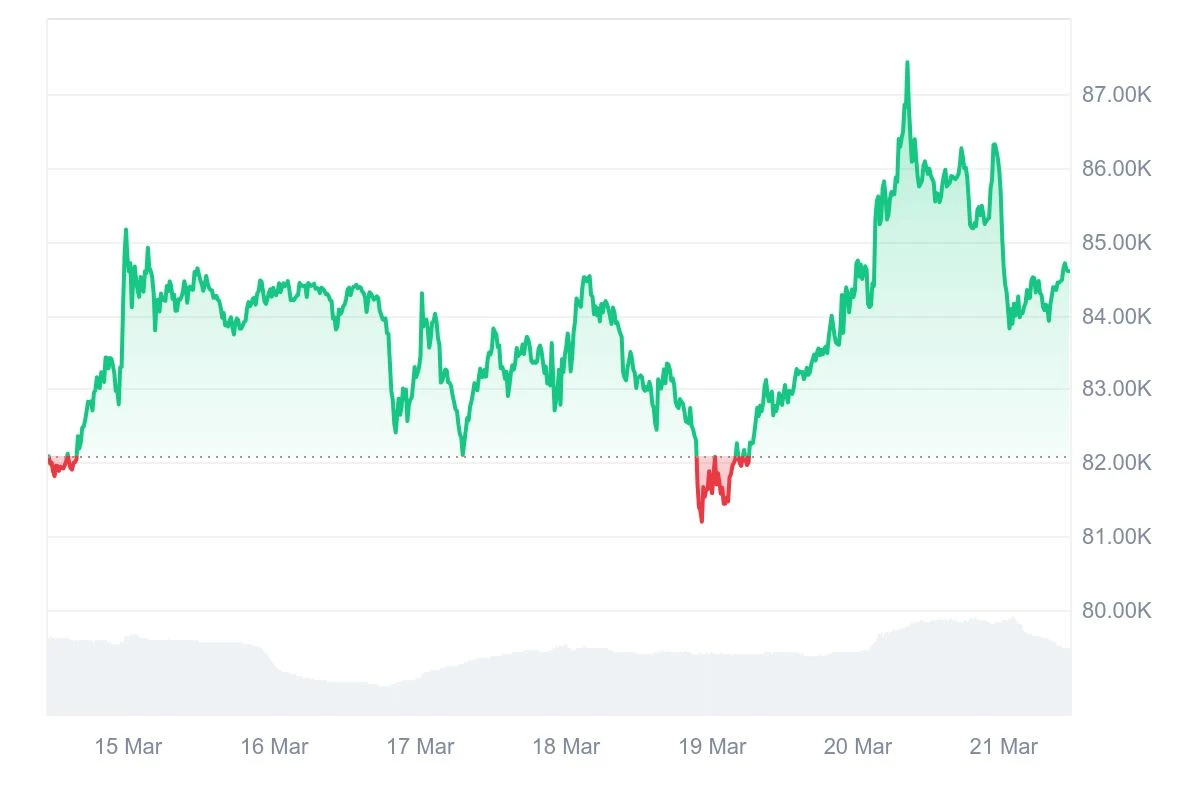
Bitcoin Price Trend (2025/03/15-2025/03/21)
2. Market Dynamics and Macroeconomic Background
Capital Flow
Exchange Capital Flow Situation
Bitcoin Spot ETF Capital Outflow: As of March 14, 2025, the U.S. spot Bitcoin ETF has cumulatively reduced its holdings by 55,348 Bitcoins over the past 35 days, a decrease of 4.76%, reflecting a decline in demand from institutional investors.
Comparison of Gold and Bitcoin ETF Capital Flows: Over the past 30 days, gold ETFs attracted $10 billion in capital inflows, while Bitcoin ETFs faced $5 billion in outflows. This trend indicates that some investors are shifting their funds from Bitcoin to traditional safe-haven assets like gold.
Whale Holdings and Trading Dynamics
Surge in Whale Trading Activity: At the beginning of the week of March 15, the large transaction volume of Bitcoin was $32 billion, which then surged by 40% to $42.9 billion, indicating a significant increase in whale demand by $13 billion in a short period.
Changes in Whale Holdings: According to IntoTheBlock data, the holdings of Bitcoin whales have shown a downward trend over the past year, but March data suggests a potential trend reversal. Whales currently hold 62,000 more Bitcoins than at the beginning of the month, indicating they are reaccumulating positions.
Whale Short Position Establishment: On March 16, 2025, an anonymous trader "0xf3f" opened a $16.2 million margin position with 40x leverage on the decentralized derivatives exchange Hyperliquid, establishing a $379 million Bitcoin short position, with a liquidation line set at $86,593. This action attracted widespread market attention and intensified market volatility.
Whale Liquidation Operations: On-chain analysts monitored that this "Hyperliquid 50x Whale" used a Time-Weighted Average Price (TWAP) strategy to gradually close Bitcoin short positions. Within an hour and a half, he closed 108 BTC, leaving 5,500 BTC short positions valued at approximately $455 million.
Technical Indicator Analysis
Moving Averages (MA):
Short-term moving averages (5-day, 10-day): Show buy signals, indicating a bullish short-term price trend.
Long-term moving averages (50-day, 200-day): Also display buy signals, suggesting a sustained bullish long-term trend.
Relative Strength Index (RSI):
- The RSI indicator is in the overbought range, signaling strong buy signals, but caution is needed for short-term pullback risks.
Stochastic Indicator:
- The stochastic indicator also shows strong buy signals, further supporting the short-term upward trend.
Overall, multiple technical indicators point to Bitcoin being in a strong buying zone, with both short-term and long-term trends maintaining an upward trajectory. However, due to the RSI indicator being at a high level, attention should be paid to the potential overbought pullback risks in the market, and investors are advised to cautiously position themselves based on their risk tolerance.
Market Sentiment
Panic Sentiment Easing: According to on-chain analyst Murphy's analysis, market panic sentiment has gradually weakened after reaching a peak, with players significantly reducing panic selling behavior at low prices, and sentiment is quietly recovering.
Increased Bottom-Fishing Willingness: During the second wave of pullback from March 7 to March 13, there was a significant increase in active buy orders for Bitcoin spot on the Coinbase platform, indicating strong interest from U.S. players in Bitcoin around the $80,000 mark, with a strong willingness to bottom-fish during declines.
Market Confidence Rebounding: Although prices have not fully reflected this sentiment shift, the market seems to be waiting for a key trigger point. From a macro perspective, the Federal Reserve's interest rate meeting and subsequent remarks from Powell will be important nodes; as long as the meeting results do not exceed market pessimistic expectations, combined with current data, Bitcoin has a basis for a rebound in the short term.
Macroeconomic Background
Impact of Federal Reserve Policy: The Federal Reserve has kept the benchmark interest rate unchanged and plans to cut rates twice in 2025. This policy has enhanced market demand for Bitcoin, pushing it towards $86,000 or higher.
3. Hash Rate Changes
From March 15 to March 21, 2025, the Bitcoin network hash rate exhibited fluctuations, with the following specifics:
On March 15, the hash rate showed an overall downward trend, first rising from 790.37 EH/s to 814.94 EH/s, then sharply falling to 680.74 EH/s, and rebounding briefly to 741.72 EH/s. On March 16, the hash rate dipped to 701.74 EH/s, then rebounded strongly to 924.43 EH/s, maintaining a high level briefly before entering a correction phase, reaching a low of 793.49 EH/s. On March 17, the hash rate continued the previous day's fluctuating trend, first declining to 696.23 EH/s, then gradually rising to 812.89 EH/s, before slightly falling back to 779.32 EH/s. On March 18, the hash rate briefly climbed to 861.48 EH/s before entering a correction phase, gradually decreasing to 731.93 EH/s. On March 19, the hash rate rose steadily, reaching a high of 941.81 EH/s, then falling back to 813.10 EH/s, maintaining fluctuations within that range. On March 20, the hash rate first dropped to 791.07 EH/s, then rebounded to 859.72 EH/s, after a slight adjustment, further rising to 865.68 EH/s, but then continued to fall, reaching a low of 762.04 EH/s, ultimately rising back to 800.32 EH/s. On March 21, as of the time of writing, the hash rate was on a downward trend.
This week, the hash rate exhibited strong volatility, especially with significant surges on March 16 and March 19, possibly influenced by miner hash rate adjustments, changes in market sentiment, or fluctuations in energy supply. Future trends will need to focus on the overall network hash rate distribution, mining difficulty adjustments, and changes in the macro market environment.
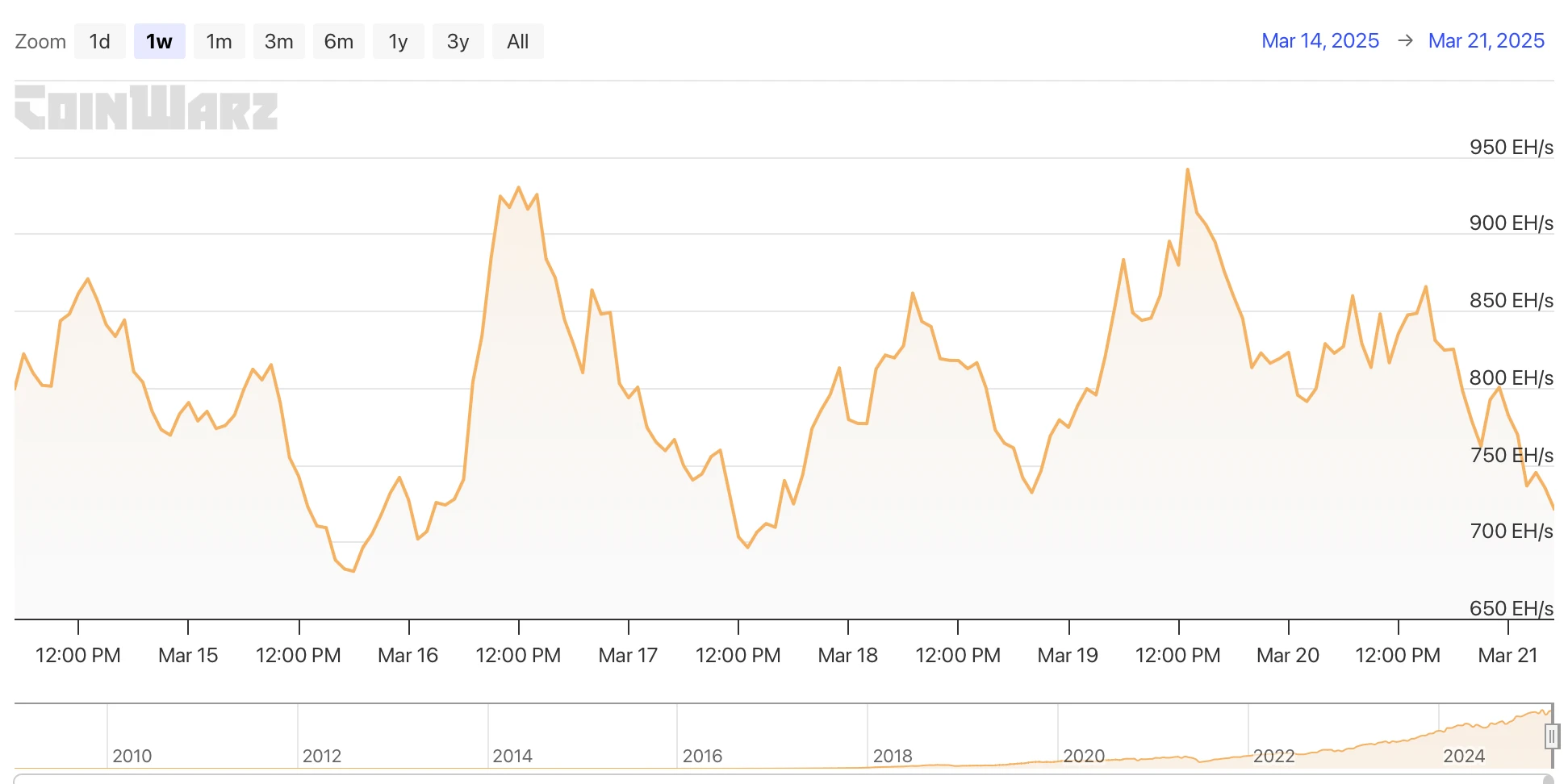
Hash Rate Data of the Bitcoin Network
4. Mining Revenue
From March 15 to March 21, 2025, Bitcoin miners' earnings were influenced by multiple factors, including Bitcoin price fluctuations, mining difficulty adjustments, and market sentiment.
On March 17, CoinDesk reported that a research report released by JPMorgan on Monday indicated a slight increase in Bitcoin network hash rate in March, while mining economics have declined.
The report indicates that U.S. listed mining companies maintain about 30% of the network's hash rate share. During the period, the average price of Bitcoin fell by approximately 10%, putting pressure on mining economics. The hash rate price (an indicator measuring daily mining profitability) remained relatively unchanged compared to the end of last month. In the first two weeks of March, miners earned about $48,300 per EH/s in daily block rewards, an 11% decrease from February and a 52% drop since the halving event in April last year.
The total market capitalization of 14 U.S. listed mining companies tracked by JPMorgan declined by 13% compared to last month, approximately $3 billion. Among them, Argo Blockchain (ARGO) performed the best, rising by 1%, while Cipher Mining performed the worst, falling by 25%. The report adds that during the same period, only one of the mining companies covered by the bank outperformed Bitcoin.
Overall, although the Bitcoin network's hash rate continues to grow, miners' profitability is facing further contraction pressure due to the price pullback.
5. Energy Costs and Mining Efficiency
According to CloverPool data, as of the time of writing, the total Bitcoin network hash rate has reached approximately 785.48 EH/s, while the current mining difficulty is 112.15 T. Based on current trends, it is expected that the Bitcoin mining difficulty will further increase by about 0.51% to reach 112.72 T during the next difficulty adjustment (approximately in two days).
According to the latest data from MacroMicro, the total production cost of Bitcoin on March 19 was approximately $88,101.12, with a Mining Cost-to-Price Ratio of 1.01. This means that the cost for miners to produce one Bitcoin is nearly equal to the market price, resulting in relatively small profit margins for miners. This ratio reflects the operational pressure on miners, especially in the context of significant Bitcoin price fluctuations, making their profitability more sensitive.
In this context, miners not only need to continuously improve mining efficiency but also optimize energy usage to ensure profitability in a highly competitive environment. In the future, the Bitcoin network's hash rate is expected to continue growing, and miners may need to increasingly rely on advanced cooling technologies and renewable energy sources like solar power to reduce their carbon footprint and energy costs, thereby gaining an advantage in long-term competition.

Bitcoin Mining Difficulty Data
6. Policy and Regulatory News
Progress of Bitcoin-Related Legislation in U.S. States
Kentucky
On March 15, the Kentucky State Senate passed the Blockchain Digital Asset Bill (HB 701) unanimously with a vote of 37-0. The bill has now been submitted to the governor's office for final approval. The bill confirms individuals' rights to self-custody digital assets through self-custody wallets and prevents local governments from implementing discriminatory laws against digital asset mining companies, ensuring that Bitcoin miners can operate freely in the state.North Carolina
On March 19, the North Carolina State Senate introduced SB327, which authorizes the state treasury to allocate up to 10% of public funds to Bitcoin. The bill stipulates that the purchased Bitcoin will be held in multi-signature cold storage and audited monthly. The sale of Bitcoin is only permitted under "severe financial crisis" and strict conditions. North Carolina has currently proposed two Bitcoin reserve bills, namely House Bill HB92 and Senate Bill SB327. The state's general fund is approximately $9.5 billion.Missouri
On March 20, the Missouri Bitcoin Reserve Bill HB1217 was submitted to the House Special Committee on Government Affairs. This bill is one of the slower-progressing components of Missouri's Strategic Bitcoin Reserve (SBR) bill and has now entered the committee stage.
Political Figures Support Bitcoin Reserve Plans
Cynthia Lummis
On March 17, Senator Cynthia Lummis's plan for the government to purchase 1 million Bitcoins has received support from 12 U.S. political figures. The plan aims to strengthen the U.S. Bitcoin reserves and promote the legalization of Bitcoin as a digital asset.Nick Begich
On March 18, U.S. Congressman Nick Begich stated that the U.S. should purchase and hold 5% to 15% of Bitcoin to mitigate the risks of fiat currency collapse. He believes that Bitcoin reserves will provide emergency support for the American people. Begich previously called for the U.S. to become a Bitcoin superpower and announced plans to submit a Bitcoin bill to the U.S. House of Representatives in 2025.
South Korean Central Bank: Never Considered Including Bitcoin in Foreign Exchange Reserves
On March 17, the South Korean central bank clearly stated that it has "never considered including Bitcoin in foreign exchange reserves." The Bank of Korea responded to written inquiries from National Assembly members, including Planning and Finance Committee member Cha Gye-geun, on the 16th, stating, "We believe that caution is needed regarding the inclusion of Bitcoin in foreign exchange reserves." This is the first time the Bank of Korea has expressed its position on the issue of Bitcoin reserves.
The Bank of Korea's negative stance is primarily due to the high volatility of Bitcoin prices. In this regard, the Bank of Korea pointed out, "If the virtual asset market becomes unstable, Bitcoin may face a sharp increase in transaction costs during the monetization process." Additionally, the Bank of Korea stated, "We believe that Bitcoin does not meet the International Monetary Fund (IMF) standards for foreign exchange reserve calculations." For these reasons, the Bank of Korea replied, "As of now, we have never discussed or considered including Bitcoin in foreign exchange reserves." The Bank of Korea also added, "It is understood that some countries, such as the Czech Republic and Brazil, hold a positive attitude towards this, but the European Central Bank (ECB), the Swiss National Bank, and the Japanese government have all expressed opposition."
Former Federal Congressman from São Paulo, Brazil, Submits Bill to Legalize Bitcoin Salary Payments
On March 17, former Federal Congressman Luiz Phillipe of Orleans-Braganza from São Paulo, Brazil, submitted a bill to the Brazilian Congress seeking to legalize salary payments in Bitcoin. This politician proposed legislation allowing Brazilian workers to receive salaries and labor rights in cryptocurrency.
The bill aims to allow workers to receive up to 50% of their wages and benefits in digital assets. Notably, the bill does not mandate the acceptance of Bitcoin but provides a legal basis for residents wishing to engage with emerging technologies. With the employer's consent, employees can choose to receive labor rights in Bitcoin and can terminate this payment method at any time. The bill also stipulates that 50% of the salary must still be paid in Brazilian reais to ensure currency usability. However, this provision does not apply to freelancers, foreigners, and individual entrepreneurs, with related matters regulated by the Central Bank of Brazil. The proposal must be approved by a majority vote in the House of Representatives before entering the Federal Senate for final review.
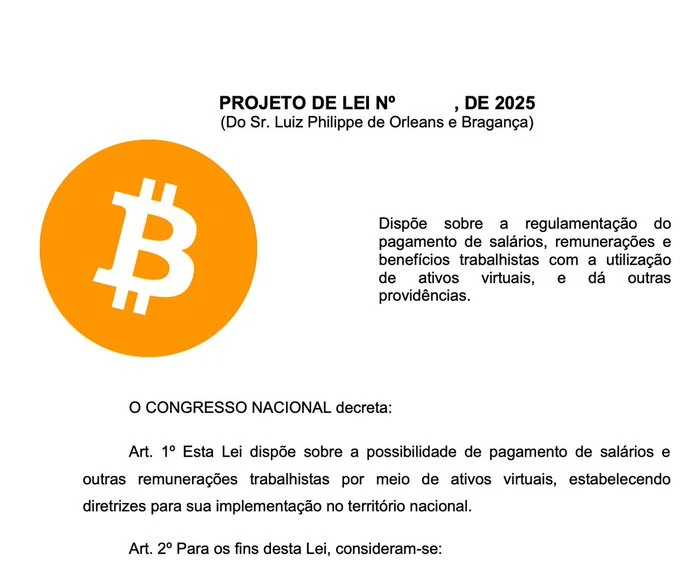
Related Images
Trump Promises to Make America a Bitcoin Superpower
On March 20, U.S. President Donald Trump delivered a pre-recorded speech at the Blockworks Digital Assets Summit in New York City, emphasizing that America will become the "undisputed Bitcoin superpower and global cryptocurrency capital." He announced the end of the previous government's regulatory restrictions on cryptocurrencies and called on Congress to pass legislation to establish clear rules for stablecoins and market structure to promote innovation and investment. Trump also mentioned recent initiatives, including hosting a White House Digital Assets Summit and establishing a strategic Bitcoin reserve, aimed at consolidating America's dominance in the cryptocurrency space.
He stated that these measures would unleash economic growth potential and enhance America's leading position in the global fintech sector.
7. Mining News
Thailand Seizes 63 Illegal Crypto Mining Devices, Stealing Electricity Worth Over $327,000
On March 17, officials from Thailand's Central Investigation Bureau (CIB) seized 63 illegal crypto mining machines last Friday, valued at approximately 2 million baht ($60,000), found in three abandoned houses in Pathum Thani province. Local residents complained about unidentified individuals stealing electricity from power poles and transformers in the area, prompting officials to conduct a raid. Locals suspected that the stolen electricity was being used for cryptocurrency mining operations hidden in the abandoned buildings. Investigators estimate that the stolen electricity from these three houses due to crypto mining could result in losses exceeding 11 million baht ($327,000) for the electricity authority.
8. Bitcoin News
Global Corporate and National Bitcoin Holdings Dynamics (Weekly Statistics)
El Salvador
On March 15, El Salvador added one Bitcoin to its reserve fund. Over the past seven days, El Salvador has increased its holdings by 13 Bitcoins, bringing the total to 6,117.18 Bitcoins, valued at approximately $515.5 million.Lazarus Group / North Korea
The Lazarus Group currently holds 13,562 Bitcoins, pushing North Korea's Bitcoin reserves above those of El Salvador and Bhutan, making it the third-largest Bitcoin holder globally, behind the U.S. and the U.K.Strategy
From March 10 to 16, Strategy increased its holdings by 130 Bitcoins, bringing its total to 499,226 Bitcoins, with an average purchase price of $82,981. Additionally, the company plans to issue 5 million preferred shares to raise funds to continue executing its Bitcoin reserve strategy.Metaplanet
Metaplanet issued 2 billion yen (approximately $13.38 million) in zero-interest bonds to purchase more Bitcoin and announced an increase of 150 Bitcoins, bringing its total holdings to 3,200 Bitcoins.
Analysts: Bitcoin is Experiencing "Shakeout" Rather Than the End of a Four-Year Cycle
On March 16, it was reported that Bitcoin's current price has fallen 22% from the historical high of $109,000 set on January 20, the day Trump was inaugurated. Despite investor sentiment repeatedly dipping into the "extreme fear" zone, crypto analysts generally believe that the Bitcoin bull market cycle has not yet ended, and this decline may be a "shakeout"—a sharp drop triggered by concentrated profit-taking from bulls, followed by a rapid rebound.
Bitfinex analysts point out that "multiple key technical indicators have turned bearish, raising speculation about an early end to the bull market. However, the four-year cycle of Bitcoin remains a key factor, as history shows that pullbacks during bull market cycles are normal. This time, it is more likely a shakeout rather than the beginning of a bear market. The bottom for Bitcoin may align with the U.S. stock market (especially the S&P 500), with the $72,000 to $73,000 range still being a critical support zone, but global bond yields and stock market trends will dominate Bitcoin's next moves. The risks of a trade war have been partially priced in, but long-term economic pressures may suppress sentiment."
Nexo analyst Iliya Kalchev states, "Although Bitcoin's four-year compound annual growth rate (CAGR) has dropped to a historical low of 8%, the halving event remains crucial for long-term price trends. The halving in April 2024 will reduce the block reward to 3.125 BTC, and since then, Bitcoin has cumulatively risen over 31%. While institutional adoption driven by ETF purchases has become a major force over the past year, the halving effect will continue to influence the market."
Analysts: Bitcoin Bull Market May Return in June, Median Target Price Expected to Reach $126,000
On March 16, it was reported that Bitcoin has dropped 30% since peaking in mid-January, but network economist Timothy Peterson believes the bull market may return. He stated, "Currently, Bitcoin's trading price is close to the lower end of its historical seasonal range. Bitcoin's annual performance has almost always occurred in two months: April and October, which means it is entirely possible for Bitcoin to set a new historical high before June, with a median target price of $126,000."
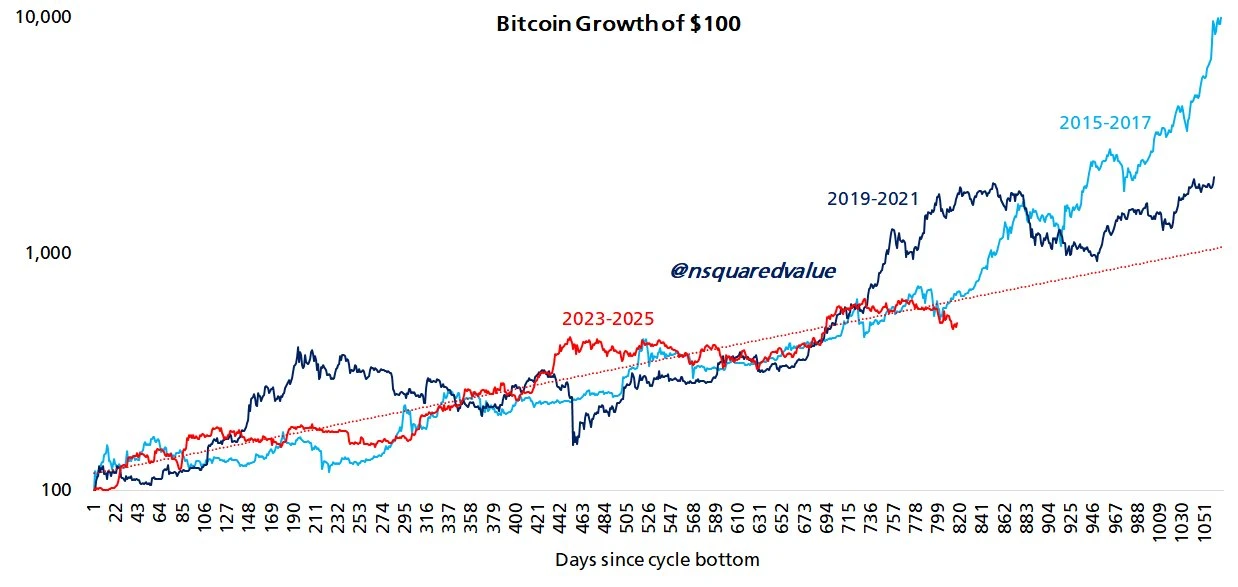
Related Images
Shen Yu: Strategy Amplifies Bitcoin's High Volatility by 2.5 Times to the U.S. Stock Market, Professional Institutions Use This High Volatility for Arbitrage
On March 17, Cobo co-founder and CEO Shen Yu stated that Strategy (MSTR) cleverly designed to amplify Bitcoin's high volatility by 2.5 times to the U.S. stock market.
Professional institutions use this high volatility for arbitrage to gain short-term profits; MSTR raises cash through issuing convertible bonds and ATM stock increases to accumulate large amounts of Bitcoin; ordinary shareholders bear the risks of severe stock price fluctuations and short-term declines but passively gain "Bitcoin earnings" as the number of Bitcoins per share increases; Bitcoin holders benefit from continuous market capital inflows and rising Bitcoin prices.
CZ: Holding Bitcoin Surpasses 99% of Market Participants, the Last 1% of Winners Need Extraordinary Efforts
On March 17, Binance founder CZ responded to EmperorBTC's views on social media, stating that only 5% of people in the market can survive long-term in the crypto space, among which:
• 4% are actively trading or involved in projects but still underperform compared to Bitcoin.
• Only 1% can truly outperform Bitcoin, which requires extraordinary effort.
CZ emphasized that long-term holding of Bitcoin can surpass 99% of crypto market participants, while also performing better than most traditional assets, with almost no need for active trading operations.
GSR Co-Founder: Bitcoin's Return to a Stable Zone is Just a Matter of Time, the Bull Market is Still On
On March 18, GSR co-founder and founder of the cryptocurrency clearinghouse Yellow stated, "Bitcoin's value remains unchanged; it is still at $100,000, and now it is just discounted by 20% due to risks and uncertainties. Bitcoin's return to a stable zone is just a matter of time. If we eliminate all uncertainties, Bitcoin will appreciate. We are in a bull market."
Despite U.S. President Donald Trump's sudden shift to support the crypto industry, his government's aggressive tariff policies have led to investor flight, with Bitcoin dropping over 20% from the historical high set on January 20, the day Trump was inaugurated.
Meanwhile, as the VIX (an index measuring market volatility expectations) surged over 50% this month, investors are flocking to gold. Gold set a new record of $3,000 per ounce in March. Sirkia, discussing Bitcoin's investment attributes, stated, "In the eyes of institutions, Bitcoin is not viewed as a long-term asset like gold."
Cathie Wood: Most Memecoins May Go to Zero, Bitcoin Could Reach $1 Million by 2030
On March 19, Cathie Wood stated that most Memecoins may ultimately become "worthless" and warned investors to be cautious.
She pointed out that the combination of blockchain technology and AI is giving rise to "millions" of Memecoins, but ARK's private equity funds will not invest in these assets. Wood believes that Memecoins may evolve into "digital collectibles," with only a few able to withstand the test of time, including the Memecoin launched by Trump.
Additionally, she reiterated her bullish outlook on mainstream crypto assets like Bitcoin, Ethereum, and Solana, predicting that Bitcoin could surpass $1 million by 2030.
Bitwise CIO: Continuing to Buy During Bitcoin Crises Typically Yields High Returns Within a Year
On March 19, Bitwise Chief Investment Officer Matt Hougan stated that Bitcoin's response to crisis moments—such as the recent tariff-driven pullback by President Trump—depends on Wall Street's valuation of the asset and its drip effect on the market's "invisible hand." While Bitcoin is often referred to as a long-term hedge asset, it tends to experience sharp pullbacks during short-term volatility, leaving many investors frustrated. Bitcoin's average decline is 30% higher than that of the S&P 500 index, but those who continue to invest or buy more stocks after a pullback typically see average returns of up to 190% in the following year. This "drop then rise" pattern is one of the common trends in the cryptocurrency market.
10x Research: U.S. Inflation Concerns Ease, Bitcoin Expected to Rise Above $90,000
On March 19, 10x Research CEO Markus Thielen stated that despite widespread investor concerns, Bitcoin may be poised to rise above $90,000 due to easing inflation worries in the U.S. He added, "Due to oversold prices, we can see some counter-trend rebounds, and the Federal Reserve is likely to take a dovish stance, which is a slight adjustment by policymakers. This will place BTC in a broader consolidation range, but it is entirely possible to return to $90,000."
Nexo analyst Iliya Kalchev stated that traders and investors will be watching for any news regarding the end of the Federal Reserve's quantitative tightening (QT) plan, as this could increase liquidity. The decisions the Fed is about to make may be the main catalyst for further movements, and if Chairman Powell takes a dovish stance, Bitcoin could soar in a new bullish momentum.
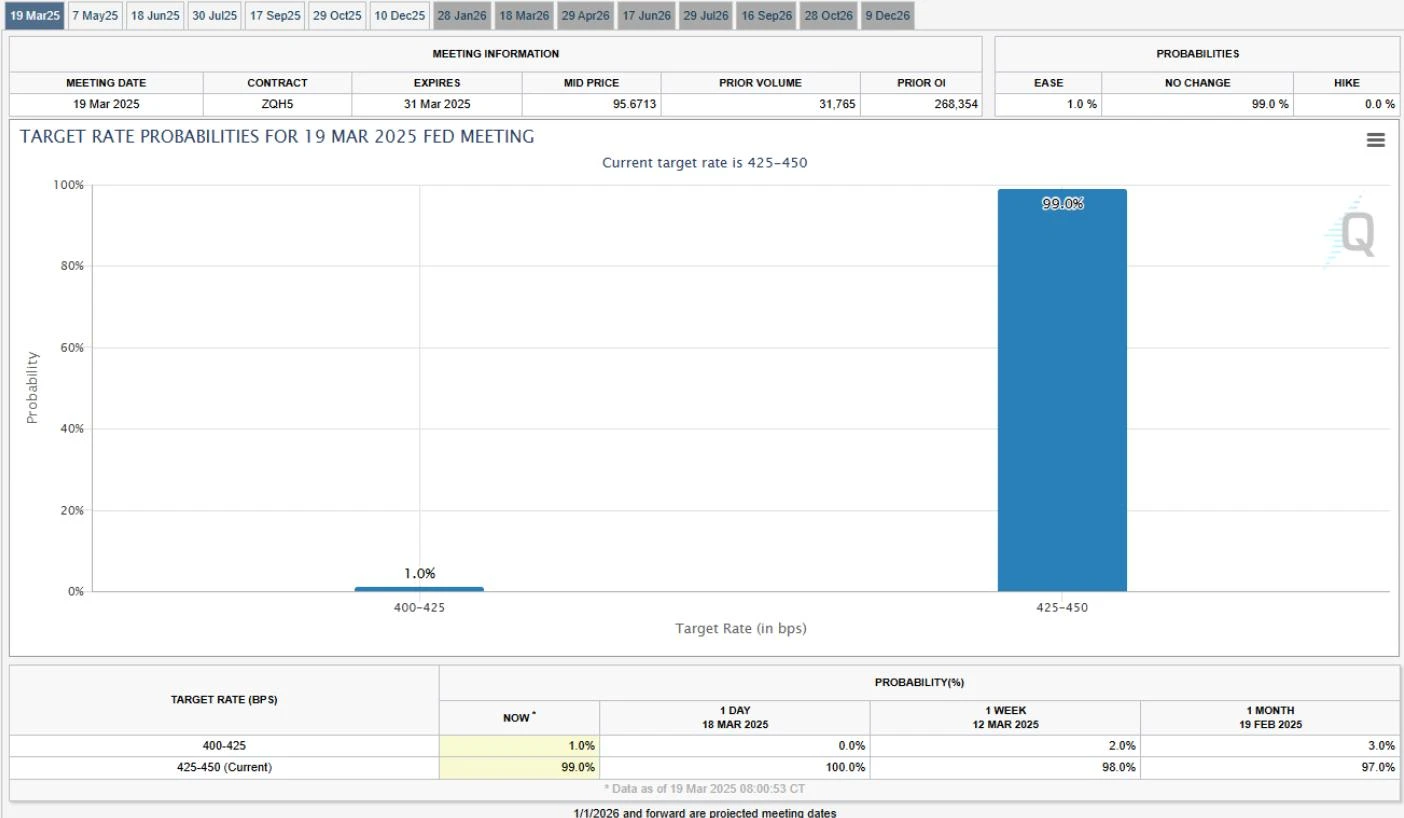
Related Images
免责声明:本文章仅代表作者个人观点,不代表本平台的立场和观点。本文章仅供信息分享,不构成对任何人的任何投资建议。用户与作者之间的任何争议,与本平台无关。如网页中刊载的文章或图片涉及侵权,请提供相关的权利证明和身份证明发送邮件到support@aicoin.com,本平台相关工作人员将会进行核查。




